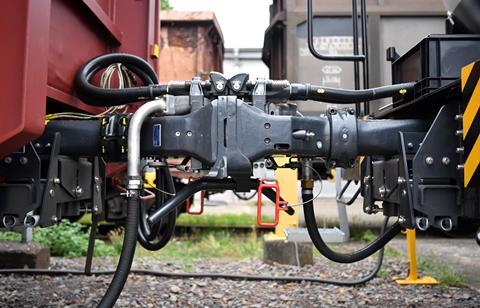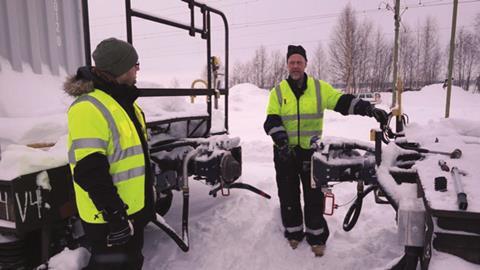
EUROPE: Following extensive testing with various prototypes, a Scharfenberg latch design has been selected as the basis for the future European Digital Automatic Coupler.

Meeting on September 21, the supervisory board of the European DAC Delivery Programme adopted a recommendation from the organisation’s Programme Board, which it described as a ‘milestone in the process that will lead to the final design of the selected coupler head, ensuring interoperability and operational performance free of royalties or licences’.
The decision will feed into a revision of the Technical Specifications for Interoperability due to be adopted in 2022.
The EDDP defined the criteria for the selection process earlier this year, while a series of test campaigns were being conducted on a variety of coupler heads. Four couplers had been offered for testing: two Scharfenberg types, a Schwab design and an SA-3 type. These were provide by various manufacturers including Dellner, Voith and Wabtec. The SA-3 was subsequently withdrawn.

Winter testing was undertaken by Trafikverket in Sweden with support from the Shift2Rail research programme, while extensive tests were undertaken by the DAC4EU consortium with backing from Germany’s Federal Ministry of Transport & Digital Infrastructure.
The results of the two test programmes were reviewed in dedicated workshops at the end of July 2021, looking at how well each coupler type met the various criteria.
Meeting on September 14 to review the findings of the workshops, the EDDP Programme Board reached a consensus that a Scharfenberg latch type design should be adopted. This decision was subsequently endorsed by the supervisory board.
The next phase of the project will look at the specific models being offered by the manufacturers to cover the remaining DAC requirements and determine the potential life-cycle costs. This will enable the EDDP to further develop a final specification and develop pilot production versions. The programme will feed these requirements into the TSI revision and follow up any remaining open points relevant to serial production.
The programme team noted that all three manufacturers currently participating in the test programme were ‘competent in latch type couplers’ and would be able to support the next stage of development. It anticipated that more manufacturers would look to join the process, with a view to participating in the Europe-wide implementation phase.
- Read more about the European DAC Delivery Programme in the September issue of Railway Gazette International magazine.

















